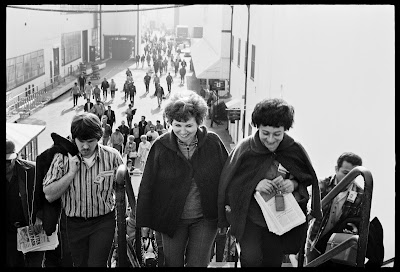Working with Students, Faculty and Time Spent at a University in the Midwest
For the last two years, I've been working/planning on an exhibition at Viterbo University. Along with showing my work, I had the opportunity to give an artist lecture & work with the faculty and students at the university. It was an amazing and rewarding experience that I wanted to share with the world.
My show: Vibrations
These photos display the range of works in this exhibition.
The show included wall works, floor art work, and mixed media works on plastic.
Wall and floor works are a mixture of commercial mesh, paint, and found materials.
My teaching in Wisconsin centered on 'Creativity', a subject I have been studying for several years alongside the development of my art practice. I wanted to share my knowledge with students and guide them. It's the cultivation of this voice that is present in the creative process. Identifying what moves us, and helps us grow in our art practice deserves at least as much focus and attention as learning formalized art techniques.
The show included wall works, floor art work, and mixed media works on plastic.
Wall and floor works are a mixture of commercial mesh, paint, and found materials.
| La Crosse Wisconsin from the air |
| La Crosse Wisconsin from the air |
My teaching in Wisconsin centered on 'Creativity', a subject I have been studying for several years alongside the development of my art practice. I wanted to share my knowledge with students and guide them. It's the cultivation of this voice that is present in the creative process. Identifying what moves us, and helps us grow in our art practice deserves at least as much focus and attention as learning formalized art techniques.
I call this process "Tapping Into the Well". As famed psychologist Carl Jung believed in the collective unconscious, I share the idea that all humanity draws from a 'source' of ideas, history, archetypes and mythology which encourages and feeds our voice over a lifetime. Whether we listen is another thing altogether and this is where a conscious process of 'paying attention' is required.
It's not something that can be directly taught, like skills in art, but I believe we can gain an awareness of those parts of ourselves that build upon this 'original' voice. A discussion of the ways we can develop creativity in ourselves and our work, (as well as stumbling blocks) followed.
By providing students with an accessible and ubiquitous material like 'aluminum foil', they were given a timed period to experiment and develop ideas without the pressure of making a piece of 'art', per se. First, the goal was to access ideas via a 'brainstorming' process, jotting down ideas on post-it notes for a short timed period centered on the idea "Who Am I?"
Teaching a class on Creativity
Teaching a class on Creativity
I had a wonderful time meeting and working with students and an extremely dedicated faculty. It is always an inspiration to see student/artists at work. The distinctive aspect of the curriculum at Viterbo is the individualized instruction and extended periods of time faculty spends with students, which is unique for an undergraduate art program. It was evident that this advantage for students played out in their focus and enthusiasm for their own art-making process.




